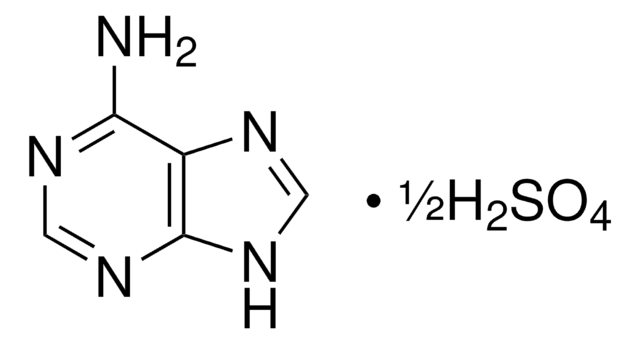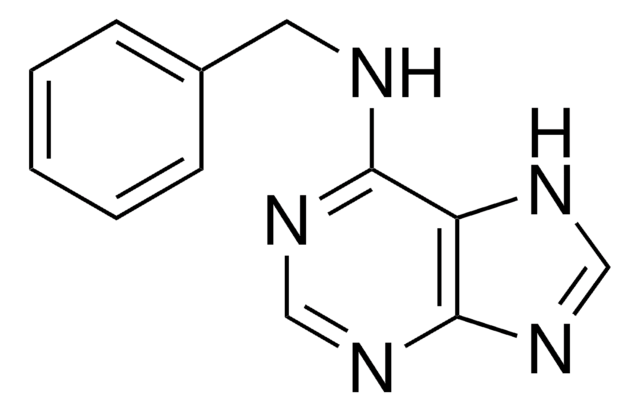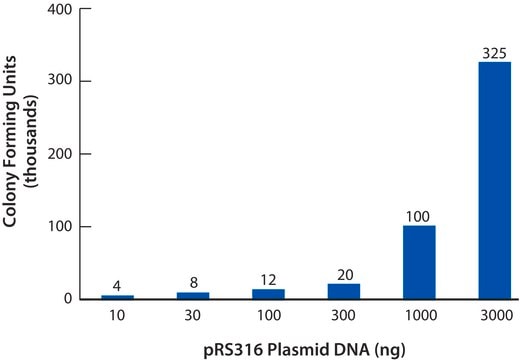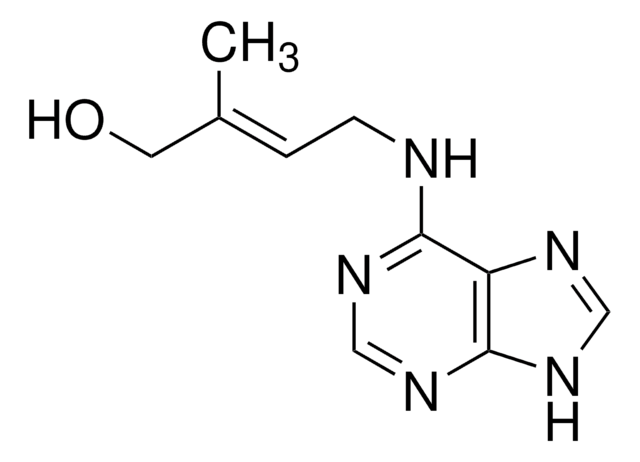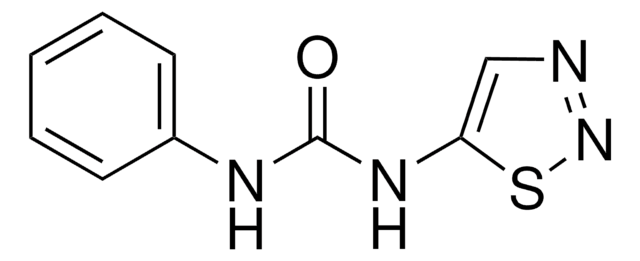Kluczowe dokumenty
A2545
Adenine hemisulfate salt
suitable for plant cell culture, BioReagent, ≥99%
Synonim(y):
6-Aminopurine hemisulfate salt, Adenine sulfate salt
About This Item
Polecane produkty
linia produktu
BioReagent
Poziom jakości
Próba
≥99%
Formularz
powder
metody
cell culture | plant: suitable
rozpuszczalność
0.5 M HCl: 10 mg/mL
Zastosowanie
agriculture
ciąg SMILES
OS(O)(=O)=O.Nc1ncnc2[nH]cnc12.Nc3ncnc4[nH]cnc34
InChI
1S/2C5H5N5.H2O4S/c2*6-4-3-5(9-1-7-3)10-2-8-4;1-5(2,3)4/h2*1-2H,(H3,6,7,8,9,10);(H2,1,2,3,4)
Klucz InChI
LQXHSCOPYJCOMD-UHFFFAOYSA-N
Szukasz podobnych produktów? Odwiedź Przewodnik dotyczący porównywania produktów
Opis ogólny
Zastosowanie
Hasło ostrzegawcze
Danger
Zwroty wskazujące rodzaj zagrożenia
Zwroty wskazujące środki ostrożności
Klasyfikacja zagrożeń
Acute Tox. 3 Oral - Eye Irrit. 2
Kod klasy składowania
6.1C - Combustible acute toxic Cat.3 / toxic compounds or compounds which causing chronic effects
Klasa zagrożenia wodnego (WGK)
WGK 3
Temperatura zapłonu (°F)
Not applicable
Temperatura zapłonu (°C)
Not applicable
Środki ochrony indywidualnej
Eyeshields, Gloves, type N95 (US)
Wybierz jedną z najnowszych wersji:
Masz już ten produkt?
Dokumenty związane z niedawno zakupionymi produktami zostały zamieszczone w Bibliotece dokumentów.
Klienci oglądali również te produkty
Nasz zespół naukowców ma doświadczenie we wszystkich obszarach badań, w tym w naukach przyrodniczych, materiałoznawstwie, syntezie chemicznej, chromatografii, analityce i wielu innych dziedzinach.
Skontaktuj się z zespołem ds. pomocy technicznej